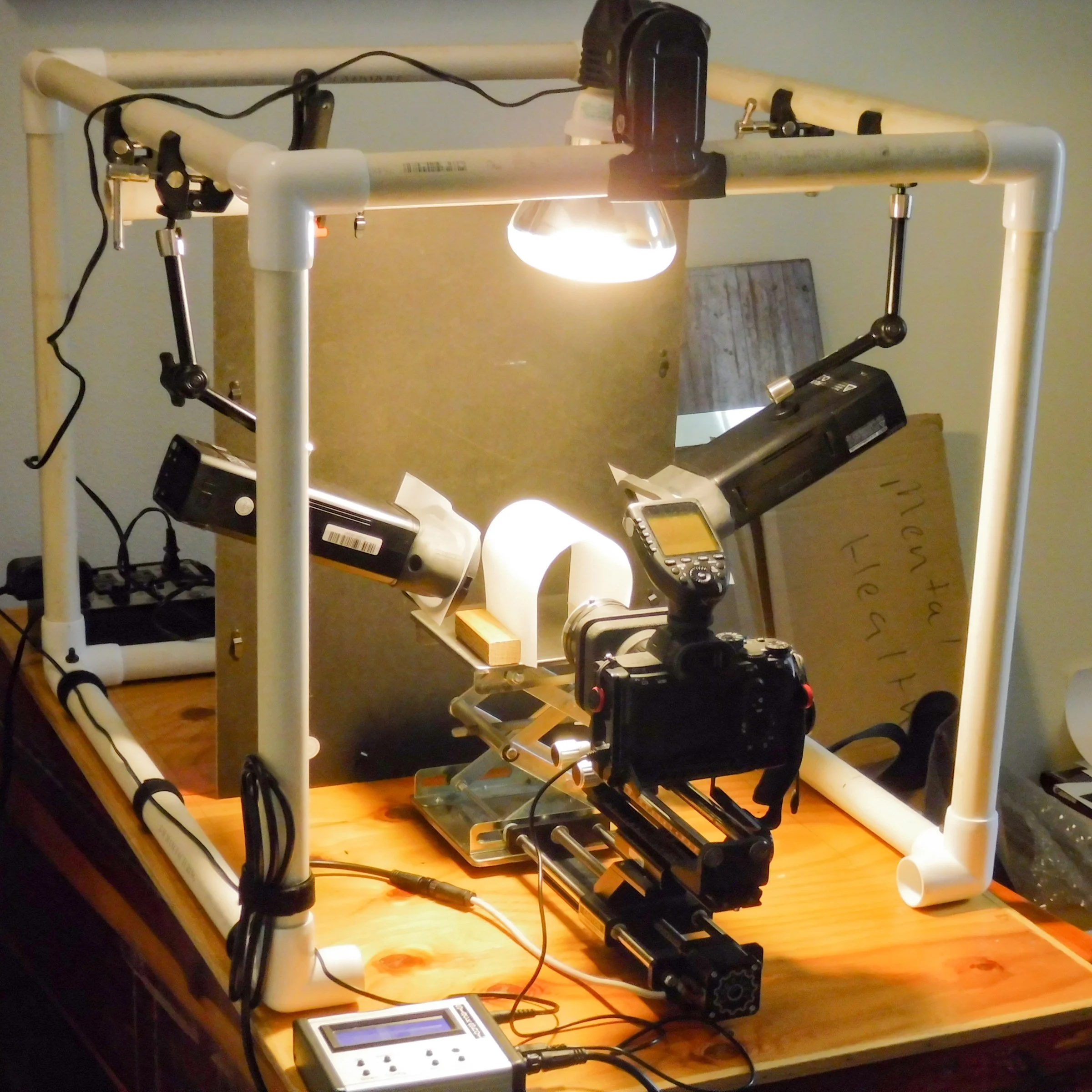The Story Behind the Photo:
January 2022: Macro-No Flowers
by Jim Higgins
oto
This is the photo I submitted for the January assignment of Macro – No Flowers. The picture is of a moth that landed on my garage door frame about a month ago. The moth was about two centimeters from tip to tip of the wings and what you are seeing is about 4 or 5mm in width showing the abdomen on the left and the wing on the right with the hairs on the wing.
I knew that moth wings were covered with scales but did not know about the scales on the abdomen or the hairs along the trailing edge of the wing.
This photo is focused stacked and is made up of 200 photos with a step length of 10 microns (1000 microns = 1 millimeter). The photos were Slabbed and Stacked by Zerene Stacker software.
If you are not asleep yet and want to continue down the rabbit hole read on.
The Cage
The Cage is the devise that I use to attach lights, diffusion material and backgrounds and anything else that must be held in a precise position.
As we learned at the last meeting, light falls off with the square of the distance and when you are dealing in millimeters a very small change will have a major impact on light intensity.
The Equipment
A. Cognisys Stack Shot programmable rail which is bolted to the plywood base for rigidity.
B. Controller for the Stack Shot.
C. Bellows to which the camera is attached.
D. Extension tubes holding the microscope objective lens to the front of the bellows.
E. Lab Lifter which holds the subject and diffusion at the proper height (the camera can not be tipped).
F. Flashes.
G. Diffusion covering the subject to spread light reducing specular highlights.
H. Radio transmitter to fire the flashes.
The Process
The controller was programmed to take 200 photos with a step length (the distance the camera is moved between photos) of 10 microns. The camera was positioned to focus at the closest point of the moth and after taking the first picture it moves forward and settles for the programmed 10 second. This settling time is to allow any vibrations caused by the movement of the rail to stop. It also allows the flashes to cool down because they are not designed for hundreds of rapid fire uses. This process is repeated until all 200 photos are taken. This takes about 40 minutes.
I then loaded the photos into Lightroom from which I exported them to Zerene Stacker. In Zerene I Slabbed them which means that they were stacked in small batches and then the Slabs were aligned and stacked again to give Pmax and a Dmap outputs. The Pmax output usually more detailed and the Dmap usually has a better redition of colors and surface texture. The only reason that I slab is it makes finding and fixing artifacts and other defects easier given the large number of original files. The Pmax, Dmap or any of the original photos can be combined in a process similar to using layers in Photoshop to create the final imqge.
The submitted photo was the Pmax version.
If any of you are interested in trying Zerene Stacker they offer a 30 day free trial and information on how to use the program at: www.zerenesystems.com


